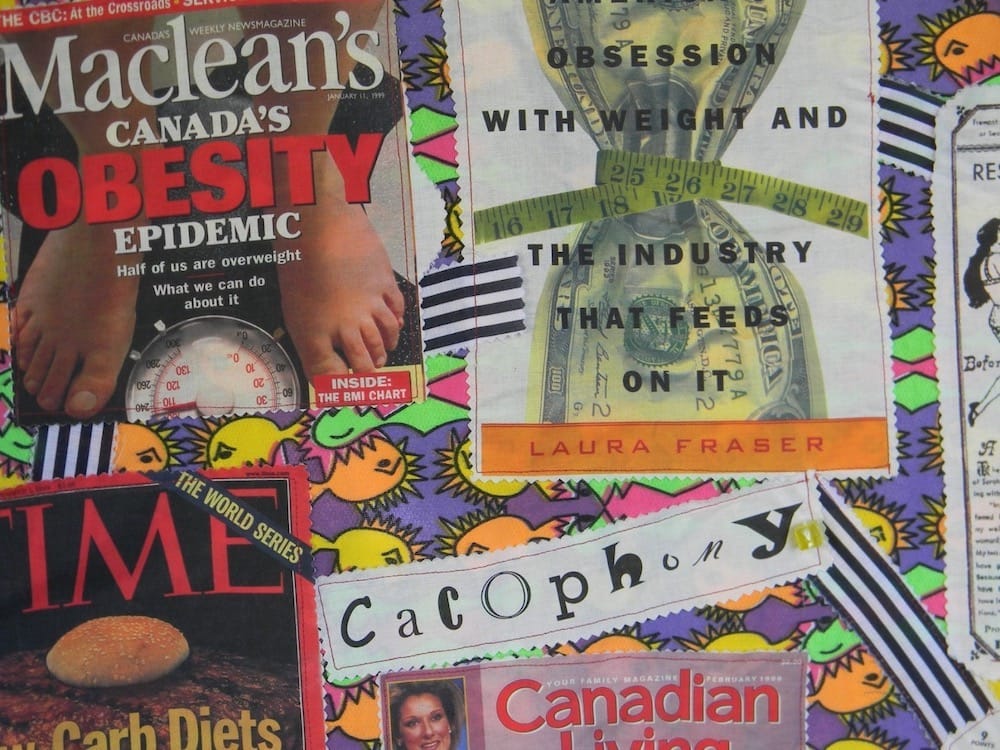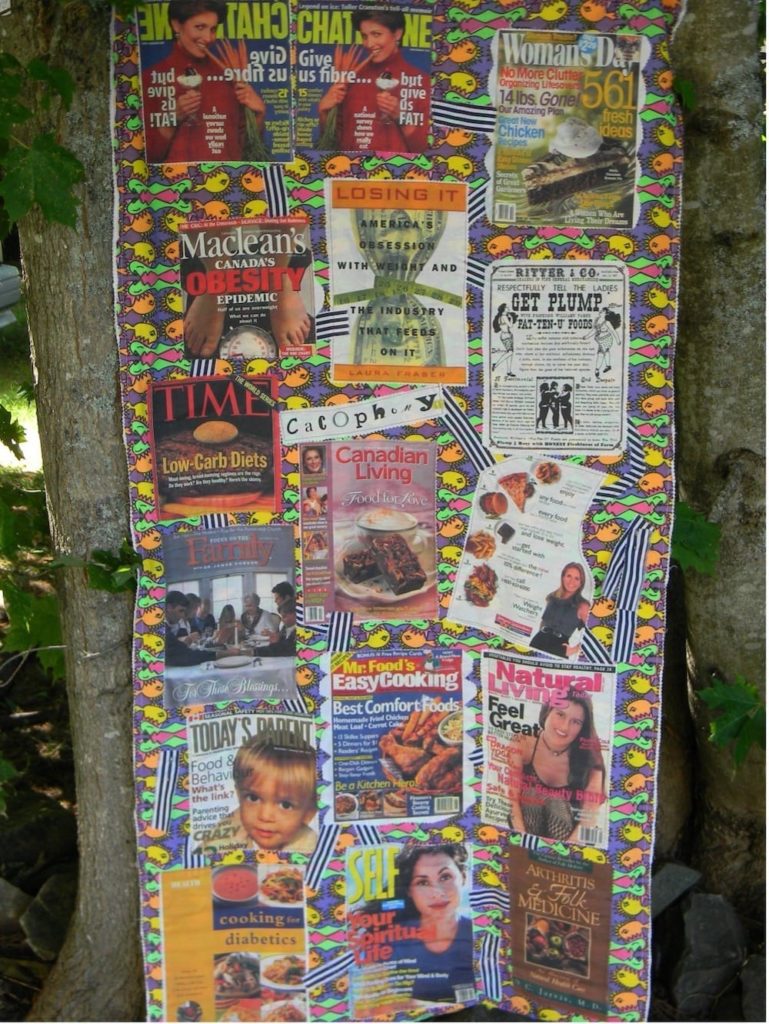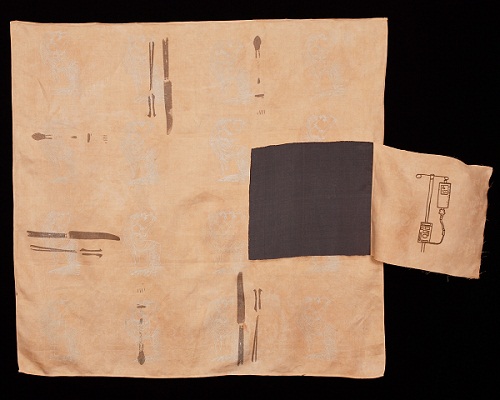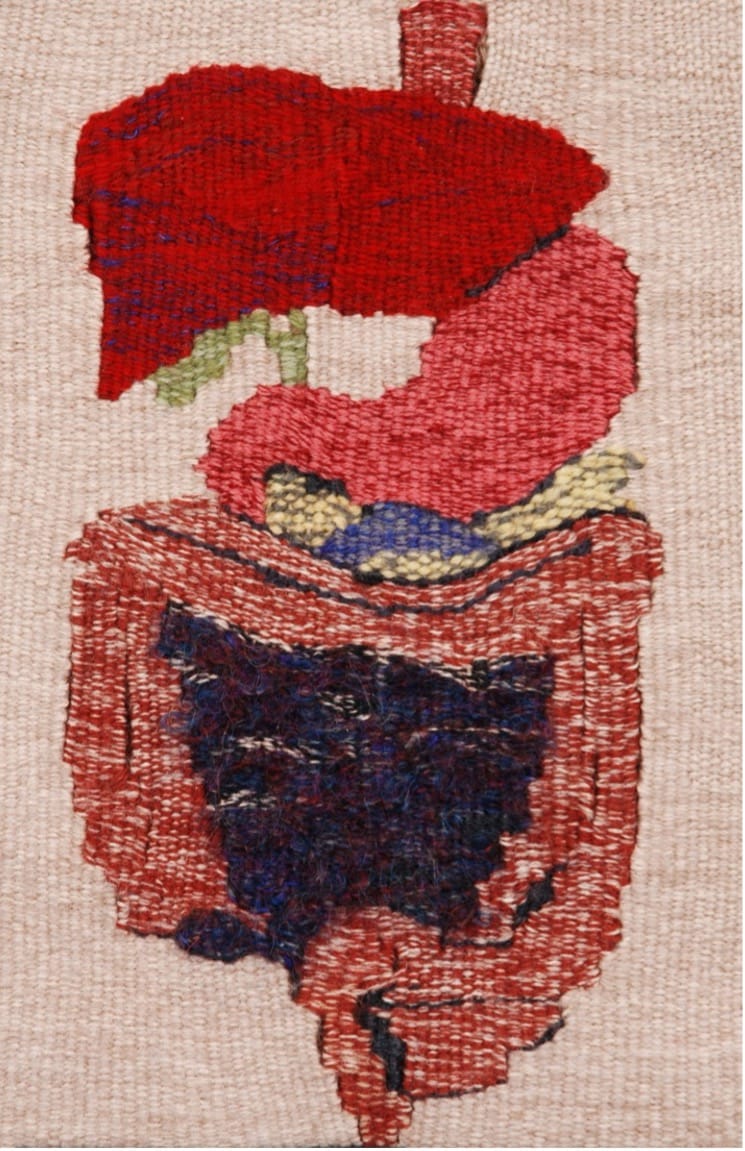I was delighted when I came across the term, dietary cacophony (Fischler, 1993) because the existence of the term confirmed that this was a widespread phenomenon familiar to people around the world, and that what I had observed in nutrition counselling work (confusion about the personal relevance of multiple and varied messages about what, when, and how to eat) was ‘a thing’. To commemorate my excitement in discovering the term, I made a wall-hanging depicting how dietary cacophony is evident in the everyday phenomenon of waiting in a grocery store checkout line.
I went to my local grocery store (in 2001) and bought magazines off the rack that, when viewed as a whole, contained conflicting messages. There were messages about ‘guaranteed weight loss’ approaches alongside recipes for luscious brownies and crispy fried chicken. There was a cover photo of a family gathered around a table to share a festive turkey meal. This photo held many messages including what a family should look like (that is, a heterosexual couple with their children and heterosexual grandparents), what a festive table setting and place settings should look like, and what food should be served. The focus was on the turkey with little else (apparently) to eat with it. So many should messages. It is important to recognize that the photo is of actors wearing costumes and on a set with props including a food-styled (ergo, not edible) turkey. From this description of one photo, I hope it is evident how we are surrounded and can be influenced by what we see and hear.

When I have used the wall-hanging in counselling, during presentations, or in teaching, I always present it rolled up. The outside layer (visible when rolled up) consists of a simple floral print (repurposed from the bassinet covering I made when my children were babies) and the sentence “It seems like a simple question…”. In counselling, I explain that this refers to how requests for nutrition consultations are often framed, “What should I eat now that I have [type of condition]?”
This does seem like a simple question. I suspect many readers will recognize this question or will have thought about it, either in relation to their own health or that of a loved one for whom they are caring. The question reveals a sense of confusion, bewilderment, and some frustration that knowing what to eat should be so complex.
I intended the wall hanging as a stimulus for conversations about feeding oneself or feeding a loved one who is sick.





